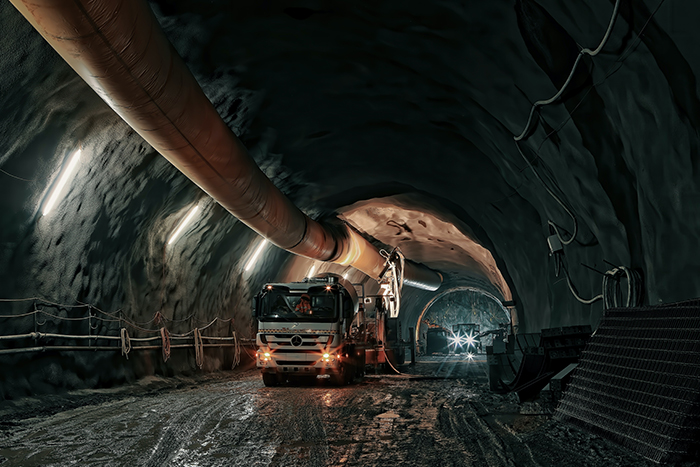Good times in the programs sector, eh? The Gold and Silver Index (XAU) is holding steady above 120, having reached a high above 156 in January, a level it had not seen since September 18, 1987. The spot uranium price is higher than it’s been since January 1980. Crude oil? Filling up your gas tank should remind you that oil prices are still painfully high. So all of this must mean mining companies are thrilled with their good fortune? WRONG! There’s a snowballing crisis in the mining sector, which has been kept off the typical investor’s radar screen. This new emergency could drive commodity prices to even higher levels over the coming months, and possibly until the end of the decade.
The two-decade long bear market drove many geologists, and other qualified technicians, out of the mining sector. Drilling companies went bankrupt. Even with the recent explosion of activity in the mining sector, exploration in the sector is less than one-third of its peak in 1981, when more than 5,500 drill rigs were running.
The mining sector’s labor and drill rig shortage has gone past the “we’re in a crisis” stage. Without qualified geological staff and drill rigs for exploration and development programs, companies may fail to get their projects online fast enough to satisfy the worldwide demand for their metals, whether it is gold, silver, copper, or uranium. The Baker Hughes North American rotary rig count is a good barometer of how strongly the commodities boom has impacted the sector. In 1999, the U.S. and Canadian drill rig count reached its nadir of 488. On March 17th, the number stood at 1546 and climbing. Over the past seven years, the count jumped 316 percent. Compared to a year ago, the North American Rotary Rig Count is up by nearly 20 percent. Internationally, the same rig count rose almost 60 percent.
During the course of our three-month investigation, we found the labor and equipment shortage applied not only to uranium but also to coal, oil and gas, coal bed methane and precious metals exploration. Ed Calvert, who runs Nucor Drilling Inc in Wyoming, exclaimed, “There just aren’t any rigs available in the U.S. You may find one, but it’s a problem finding the right rig at the right time.” His company began searching for a drill rig in September for drilling scheduled to commence June 1st. Calvert explained that the big oil companies had signed up rig contracts so they wouldn’t get caught short, adding, “Whether the rigs are being used daily or not, they are paying the fees to hold them.”
Vancouver-based Max Resources announced in early January of this year they had received permits to drill on their Thomas Mountain uranium prospect in Utah. They hoped to drill in late January, depending upon drill rig availability. We interviewed the company’s uranium geologist Clancy Wendt, who complained in early February, “I thought I had a rig lined up. Now we have no idea when we will get a rig.” Max Resources recently announced it planned to start drilling on or about the middle of March. Norman Burmeister planned more wisely, announcing in mid January Kilgore Minerals would drill the company’s Idaho gold property in July. But Burmeister got stumped in moving his uranium property’s permitting process forward, “I am still trying to find an archaeologist for my Nevada property. They just aren’t available.” Until he finishes that step of the permitting process, Burmeister can’t lock up a drill contractor to help delineate his uranium prospect.
The drill rig shortage pales when compared to the frighteningly tight labor market in the mining sector. According to the February 2006 Employment Situation Summary, published by the U.S. Department of Labor, “Mining continued its upward trend in February, adding 5,000 jobs.” Cynthia Pomeroy, Director of Wyoming’s Department of Employment confirmed the crisis, “There is definitely a labor shortage.”
Matt Grant, assistant director of the Wyoming Mining Association adamantly announced, “There are 800 direct job openings in the mining business that could be filled today.” He quickly noted another 2400 indirect jobs to service the mining industry remain empty, begging for bodies to satisfy those positions. Starting geologists make between $35,000 and $50,000 annually. Top geologists command $200,000 and higher. Mining consultants get $800-1000/day. Even day helpers on drill rigs can charge $22/hour or more. Wyoming state and county development associations have attended job fairs in Michigan earnestly trying to fill the growing job vacancy by recruiting laid-off auto workers.
David Michaud, president of TheJobPit.com, finds jobs for geologists, metallurgists and others in the mining sector. A mining engineer and consulting metallurgist, having graduated from Queens University in Kingston, Ontario, and until recently the operations manager for Corriente Resources in Ecuador, he began his internet employment agency for the mining sector because the demand was overwhelming. “Headhunters who have been around for twenty years say they’ve never seen a market like this,” Michaud stressed. “For the last ten years, the mining industry fed mining graduates to the wolves. Now they need them. All are busy with no takers to those far away places.” Michaud lambasted the mining companies for their lack of foresight, “Mining companies have to expect the demand for professionals, such as production geologists, will go up with the price of metals. There were no jobs for the past eight years.” He added, “It takes two to five years to train them.”

